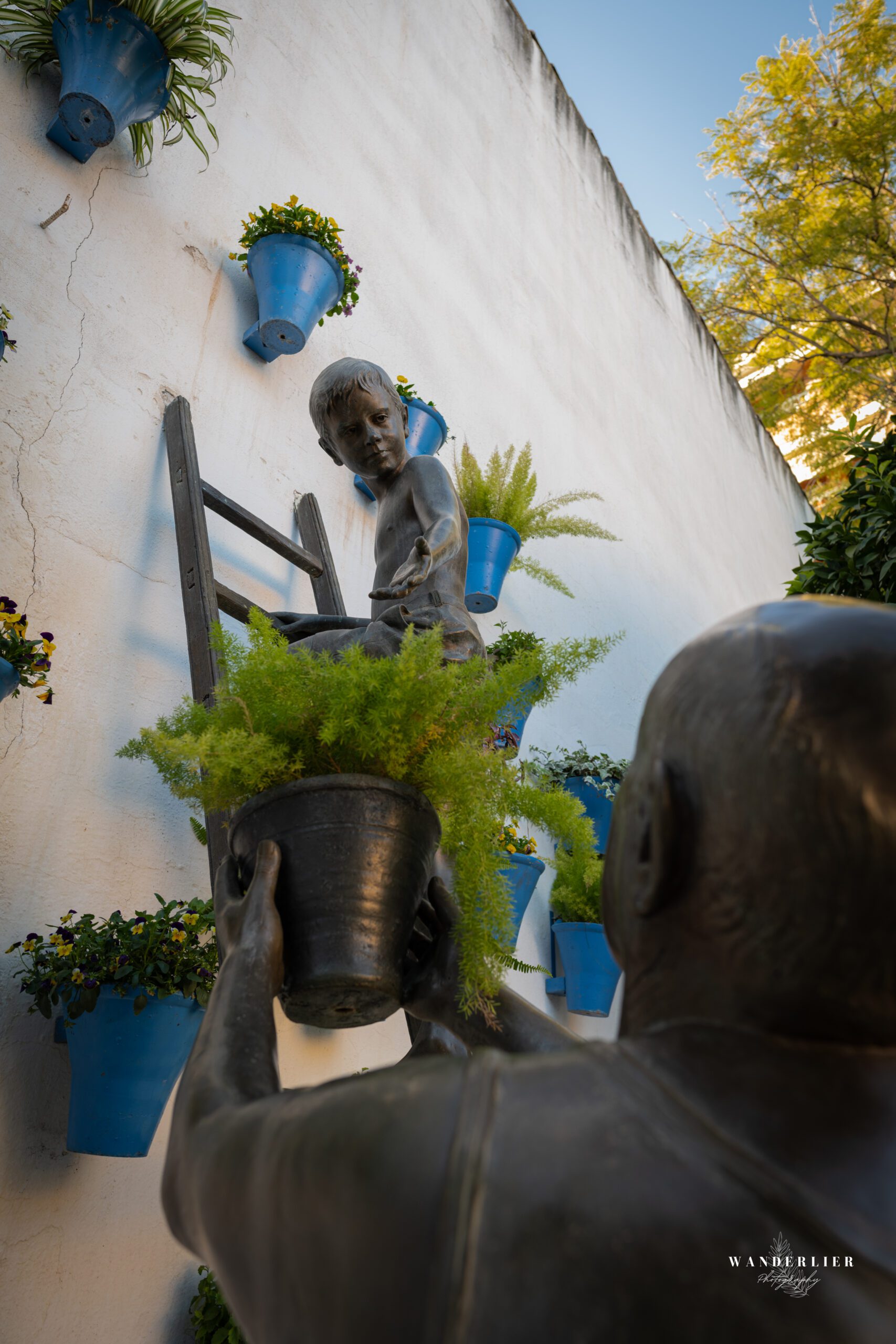Mezquita
The Mezquita in Córdoba, officially known as the Great Mosque of Córdoba, is an indispensable gem in Spanish history and architecture. Its origins date back to the Visigothic period, but the current structure reflects the Moorish dominance, with the mosque’s construction beginning in the 8th century.
Inside the walls of the Mezquita lies a fascinating blend of Islamic and Christian influences. The prayer hall is characterized by a forest of stunning columns with double arches, evoking a sense of infinity and harmony. The mihrab, a beautifully decorated prayer niche, stands as a testament to the artistic mastery of the Moorish craftsmen.
In the 13th century, the mosque was converted into a Catholic cathedral, creating an unexpected fusion of styles. These Christian additions, such as the altarpiece and chapels, contrast in an intriguing way with the Moorish architecture, giving the Mezquita a unique duality.
The impressive courtyard, known as the Patio de los Naranjos, houses a serene garden surrounded by arches and columned galleries. This peaceful refuge offers visitors a quiet space to reflect amidst the architectural splendor.
The minaret, which was transformed into the bell tower called the Torre del Campanario, offers a panoramic view of Córdoba. Climbing the tower is like a journey through time, where one witnesses the many layers of history that have shaped this remarkable site.
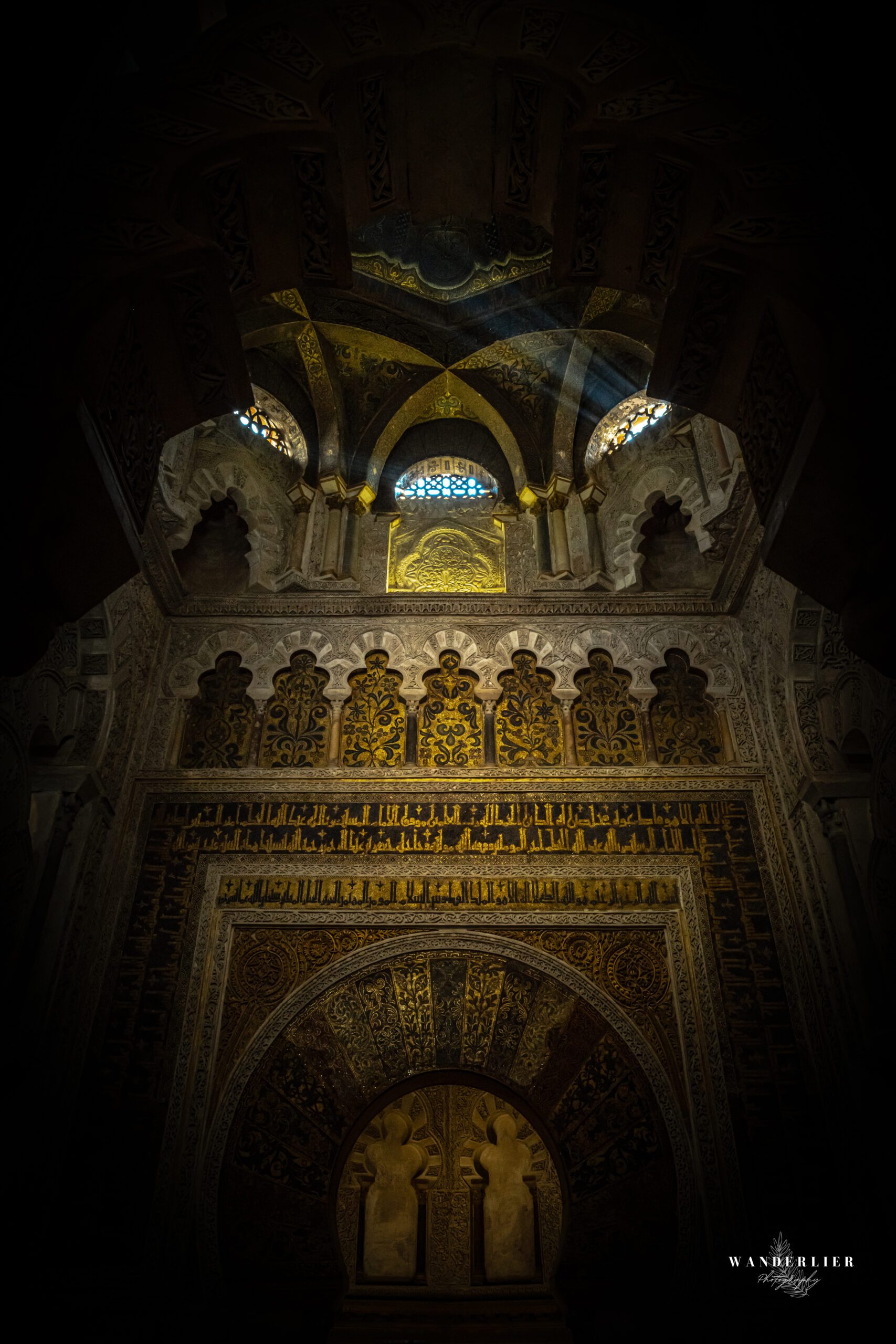
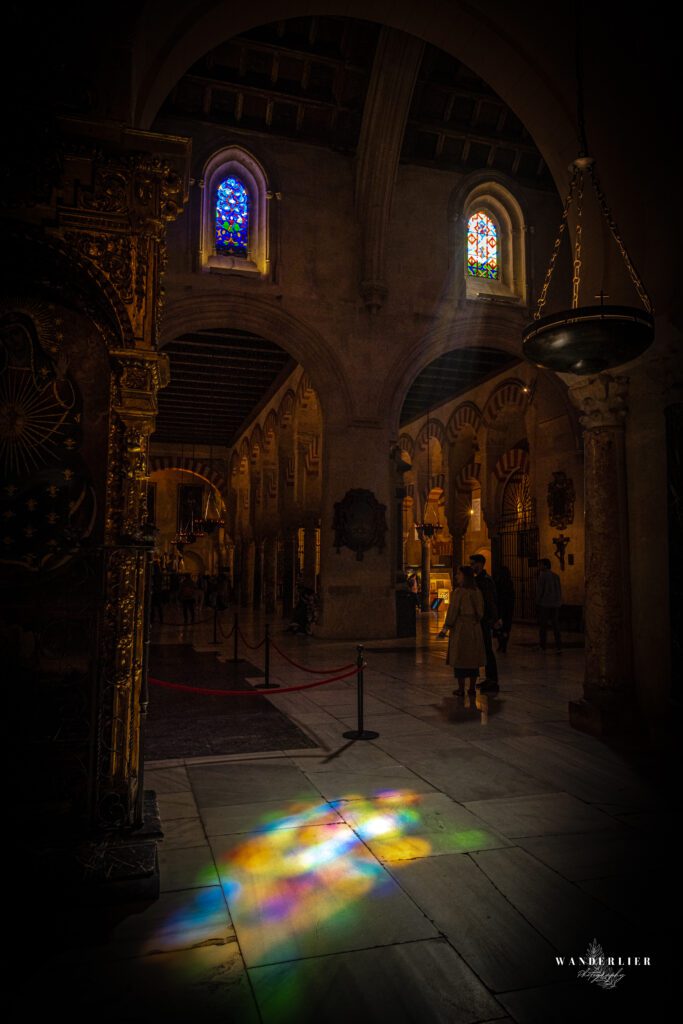
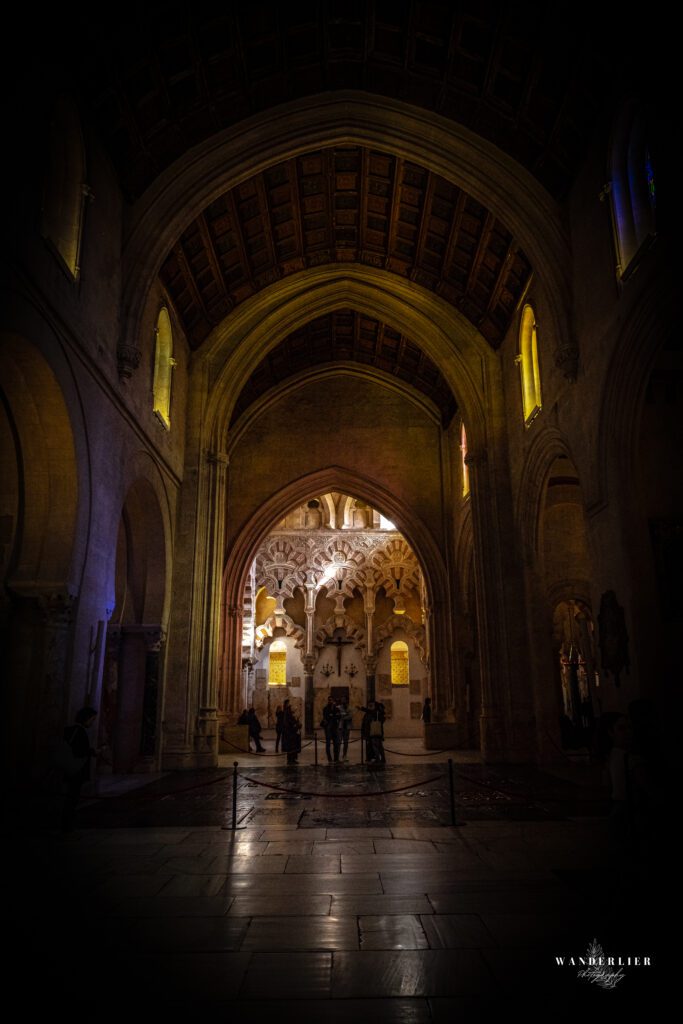
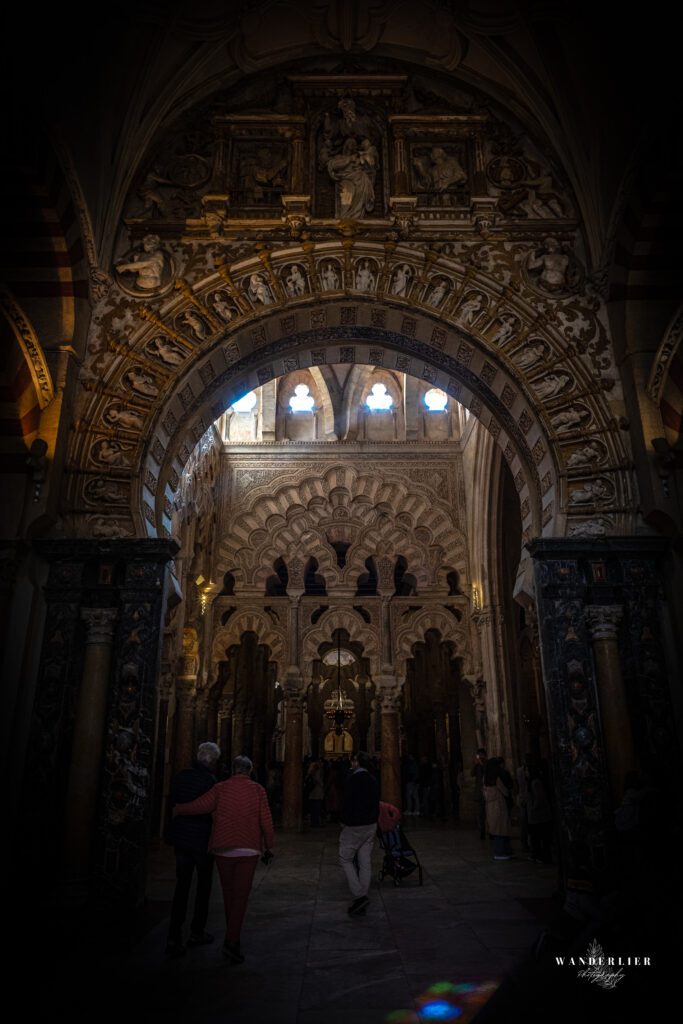
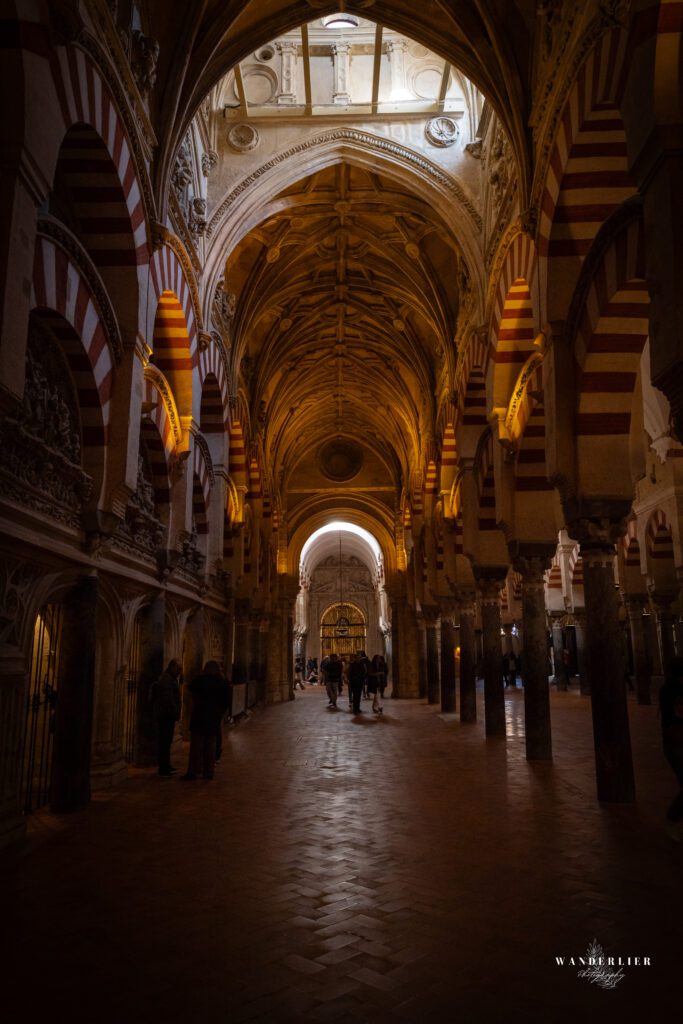
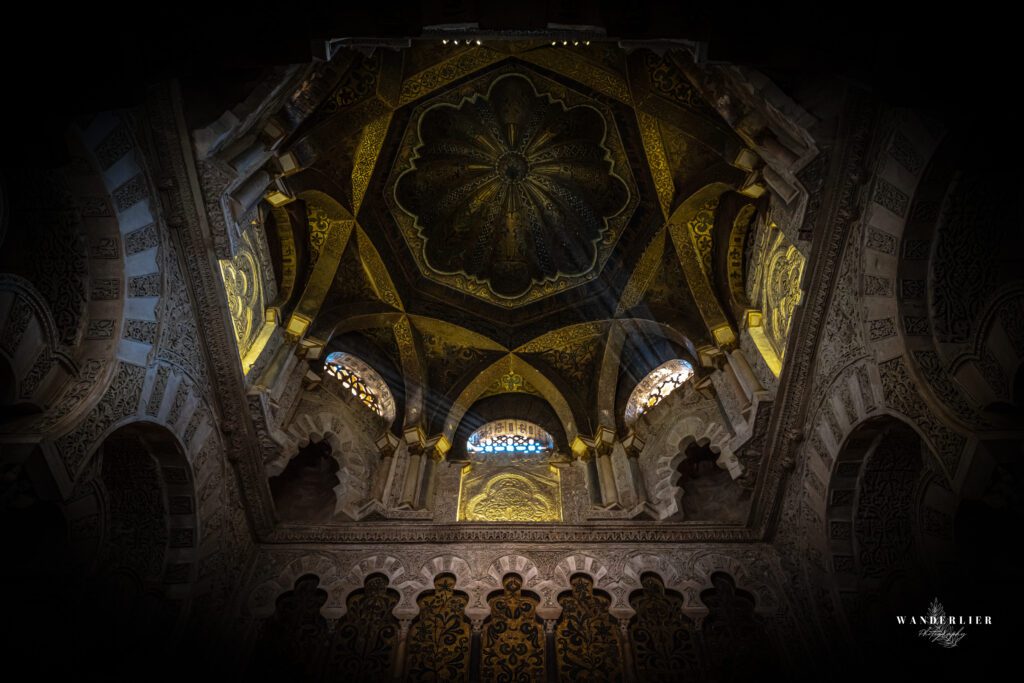
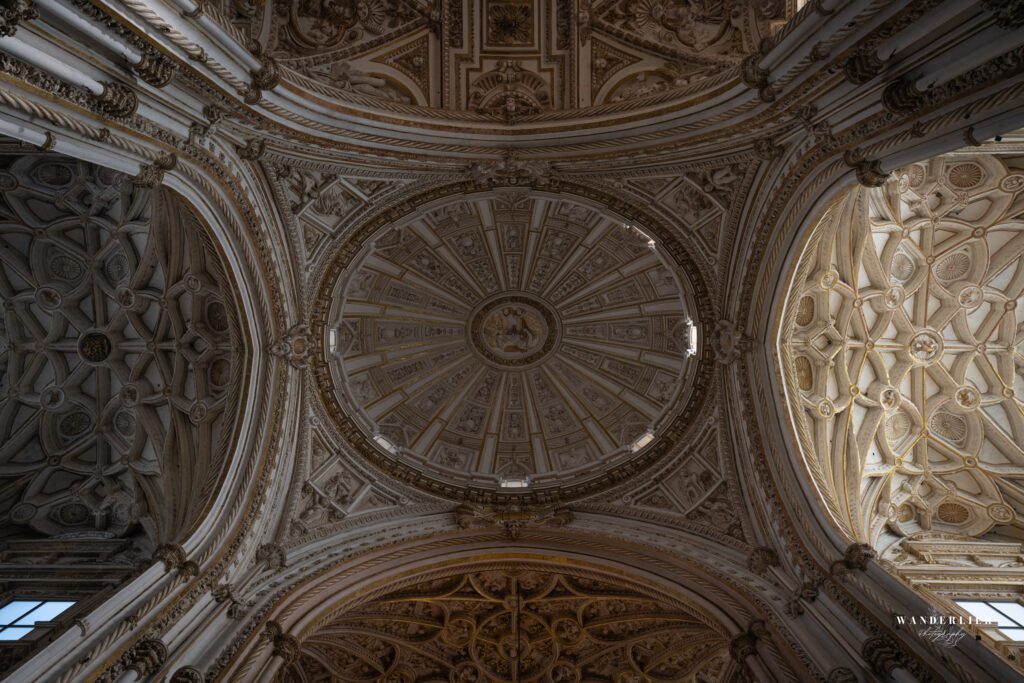
Puente Romano de Córdoba
The Puente Romano, or Roman Bridge of Córdoba, is an iconic crossing that connects the ancient city of Córdoba, emphasizing its historical charm. Originally built in the 1st century BC, this bridge stands as a testament to the rich history of Córdoba and its role as a crossroads of cultures.
The bridge spans the Guadalquivir River and served as a crucial link in the Roman road network, facilitating connections between various parts of the Iberian Peninsula. The construction of the bridge reflects the technological sophistication of the Romans, with arches that still stand strong after nearly two millennia.
What makes this bridge particularly remarkable is the impressive renovation and restoration it has undergone over the centuries. Despite repeated floods and reconstructions, the Puente Romano remains a symbol of resilience, with each stone telling a story of the eras it has withstood.
Walking across the Puente Romano offers not only a picturesque view of the city and surrounding landscapes, but it is also a journey through time. On one side, the old city stretches out, with its narrow streets and historical buildings, while on the other side, modern Córdoba unfolds.
The bridge is also part of countless legends and stories embedded in local folklore. Its presence is not only physical but also cultural, symbolizing the continuity of Córdoba throughout the ages.
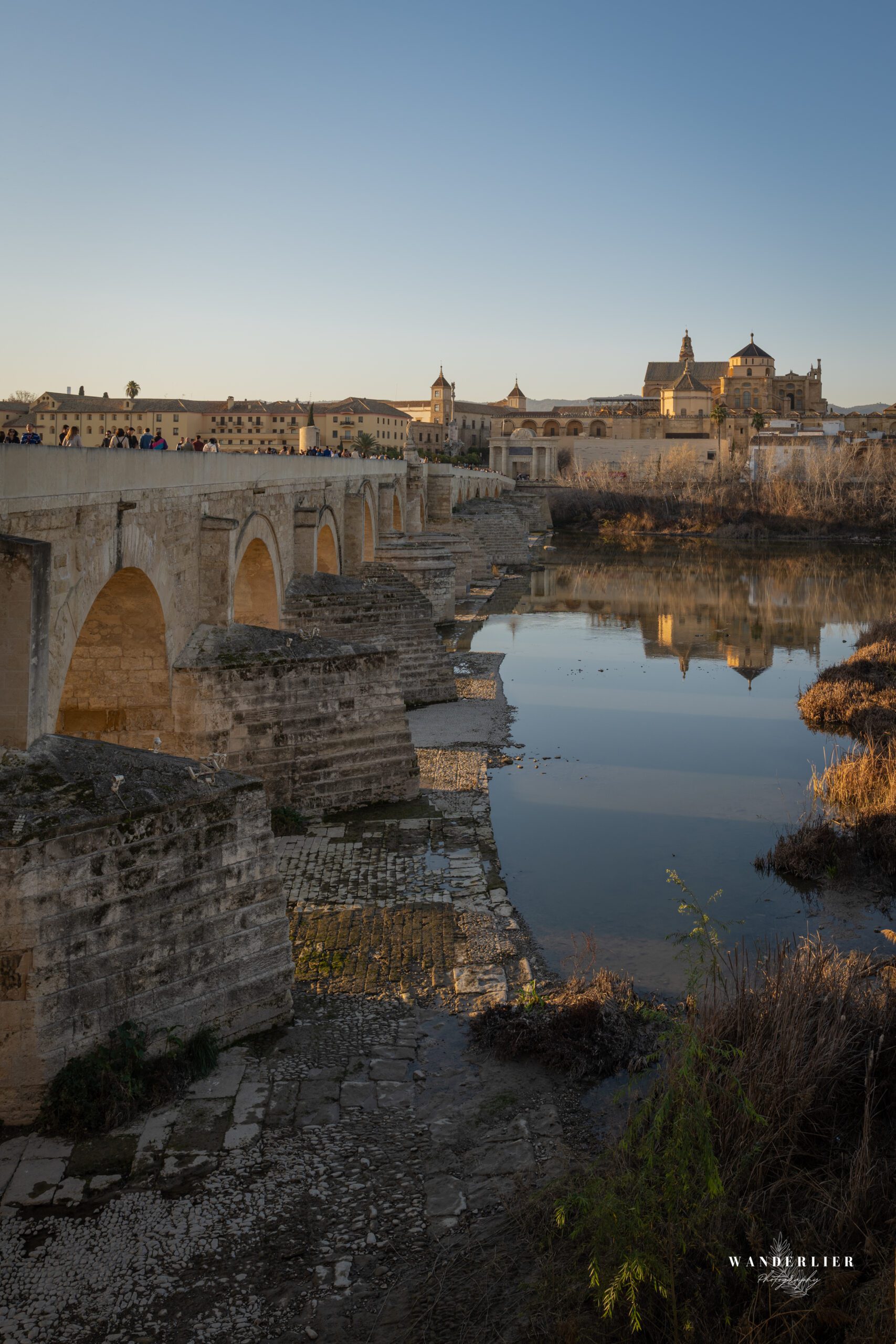
Puerta del Puente Córdoba
The Puerta del Puente, a majestic gate in Córdoba, is a historic monument steeped in cultural grandeur. Built in the 16th century, this gate marks the transition between the old city and modern times. The beautiful architecture, characterized by imposing arches and detailed sculptures, reflects the abundant artistic flourishing of the Renaissance.
The Puerta del Puente stands as a gatekeeper at the edge of the Roman Bridge, and its name suggests a poetic meaning – “Gate of the Bridge.” This adds to the mystique and symbolism of the monument, as travelers pass through it while crossing the Guadalquivir River.
The design of the gate incorporates classical elements such as columns and Corinthian capitals, giving it a timeless appearance. The overall structure exudes a sense of grandeur that is representative of Córdoba’s rich history.
The gate played a crucial role in urban planning, serving as a symbolic entrance to the historic center of the city. This architectural masterpiece functioned not only as a practical passage but also as a monumental reminder of the glorious periods that shaped Córdoba.
The surroundings of the Puerta del Puente are steeped in history, with narrow alleys, courtyards, and traditional buildings that retain the charm of old Córdoba. The gate is like a time machine, transporting visitors to bygone eras while they experience the magic of the city.
Over the years, the Puerta del Puente has preserved its original splendor, thanks to carefully carried-out restorations. It remains not only a physical passage but also an artistic monument that breathes the spirit of Córdoba.
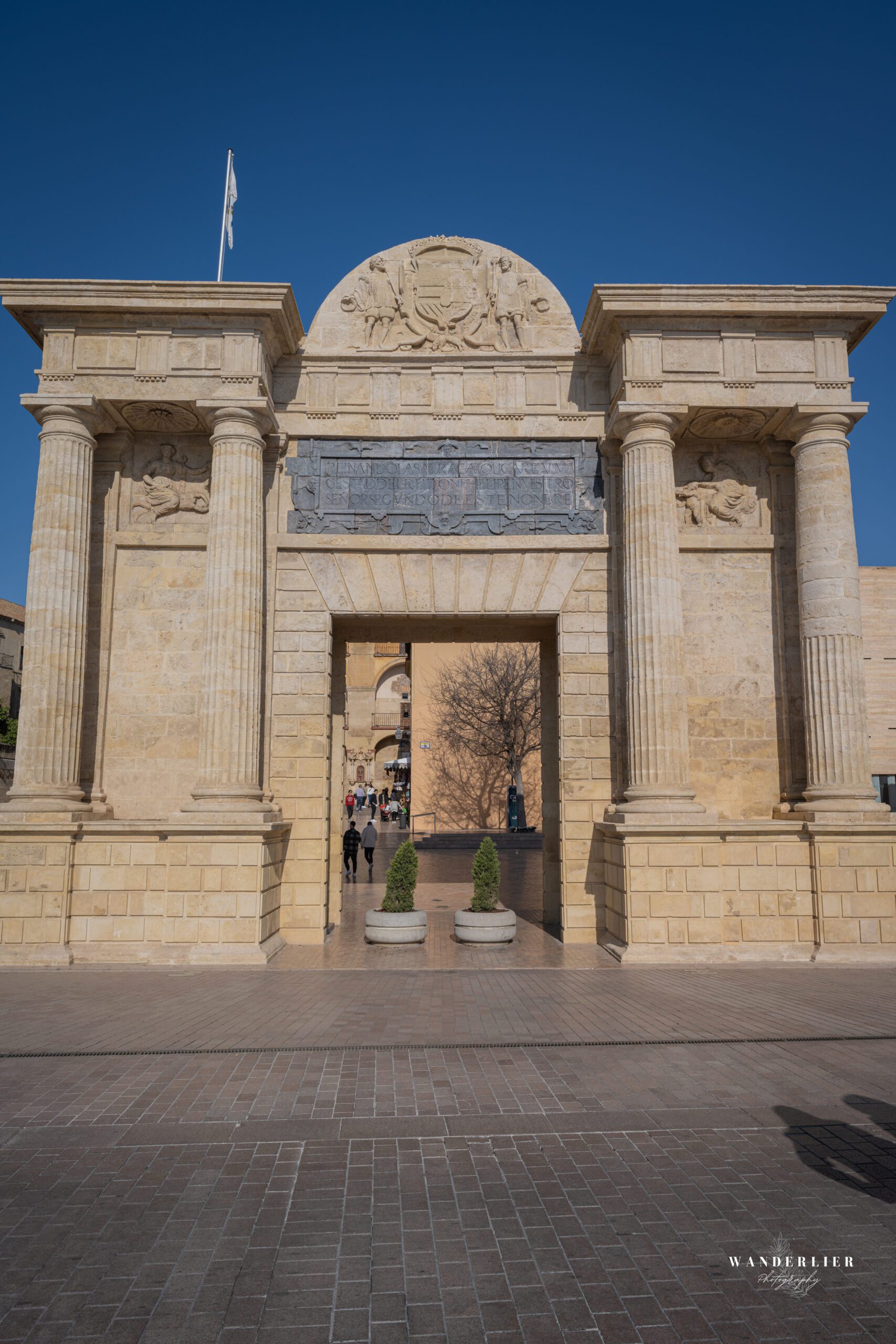
Torre de Calahorra Córdoba
The Torre de Calahorra, a fortified tower in Córdoba, guards the southern bank of the Guadalquivir River with an impressive presence. Built in the 12th century by the Almohads, this tower has a rich history that reflects the cultural layers of Córdoba.
The architecture of the Torre de Calahorra showcases Moorish influence, with its robust walls and characteristic shape. Located at the end of the Roman Bridge, the tower served as a strategic stronghold, with foundations that date back to Roman times.
A notable feature of the tower is the diorama museum it houses, which portrays the history of Córdoba. The museum offers a fascinating journey through time, from the Roman period to the Moorish rule and the later Christian influence.
From the tower’s terrace, visitors can enjoy a captivating view of the Mezquita and the old town. This panoramic view reflects the strategic location of the tower and its role in protecting Córdoba from external threats.
In addition to its defensive function, the Torre de Calahorra served as a symbol of cultural fusion. The tower stands as a testament to the coexistence of different communities and the exchange of knowledge and traditions that contributed to the diversity of Córdoba.
Restorations over the centuries have returned the tower to its former glory, and it remains an architectural gem that has withstood the test of time. The combination of history, heritage, and breathtaking views makes the Torre de Calahorra an unmissable destination for visitors seeking to discover the enchanting charm of Córdoba.
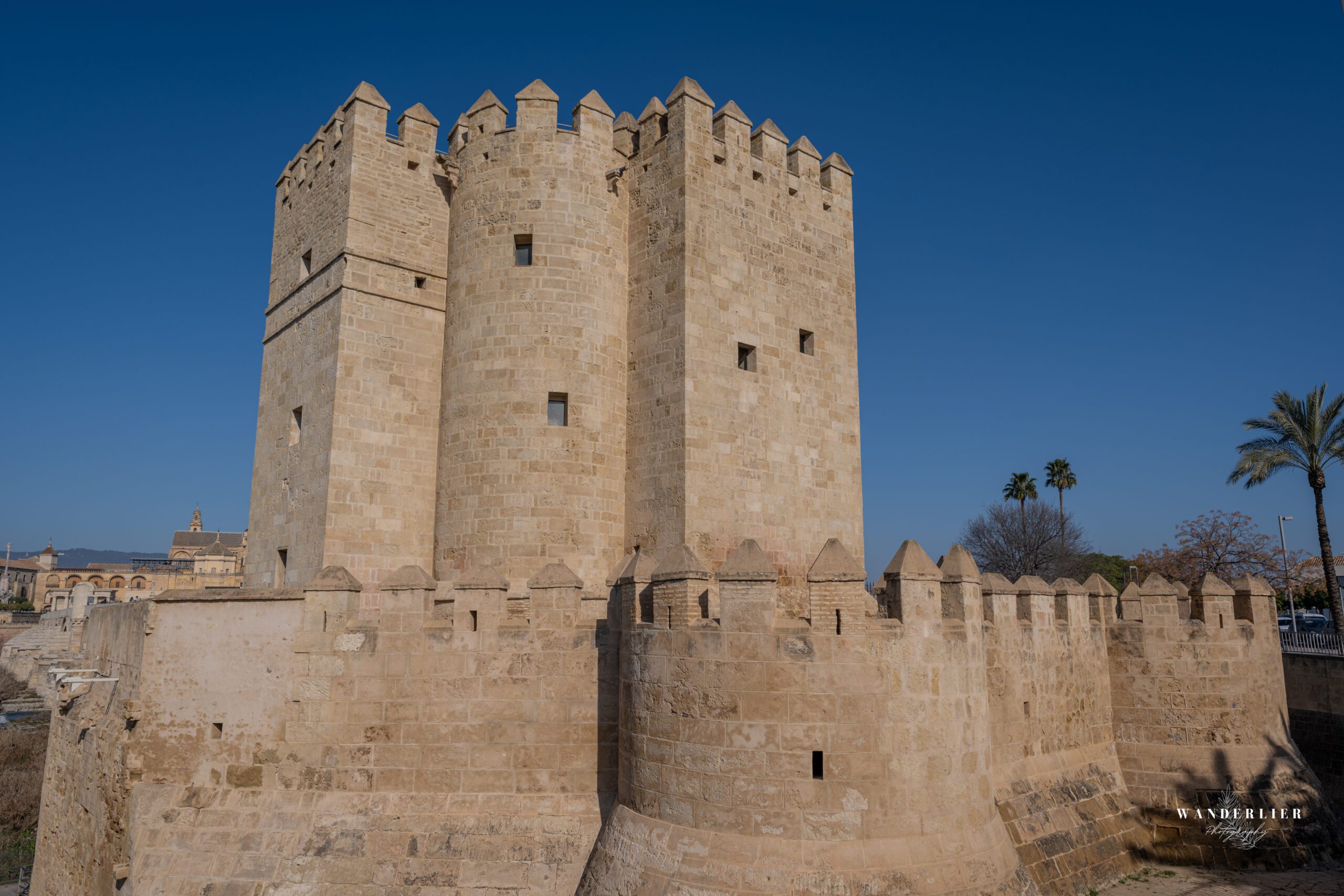
Alcazar of the Christian Monarchs Córdoba
The Alcázar of the Christian Monarchs in Córdoba, a breathtaking symbol of history, stands as a timeless monument in the heart of the city. This magnificent palace complex, built in the 14th century, represents the transition from Moorish to Christian rule in Spain.
The architecture of the Alcázar showcases a harmonious blend of Gothic, Moorish, and Renaissance elements. The imposing towers, graceful arches, and intricate decorations reflect the artistic refinement of the time.
Originally serving as a residence for Catholic Monarchs Ferdinand II and Isabella I, it later became the headquarters of the Inquisition. The courtyards, gardens, and halls exude the atmosphere of royal history and political intrigue.
A highlight of the Alcázar is its beautiful garden, surrounded by galleries and adorned with fountains and ponds. This green oasis offers a serene escape amidst the bustling city.
The gate of the Alcázar, with its Gothic arches, welcomes visitors into a world of lush history. Iconic moments, such as Columbus’ meetings with the monarchs, have infused the walls with historical significance.
Over the centuries, restorations have preserved the grandeur of the Alcázar. Today, the palace invites visitors to wander through its corridors, discover the treasures of the past, and admire the architectural splendor.
A visit to the Alcázar of the Christian Monarchs offers not only a glimpse into medieval history but also a profound experience of the cultural fusion that defines Córdoba. It is a journey through time, where every stone whispers of the intrigues and grandeur of bygone eras.
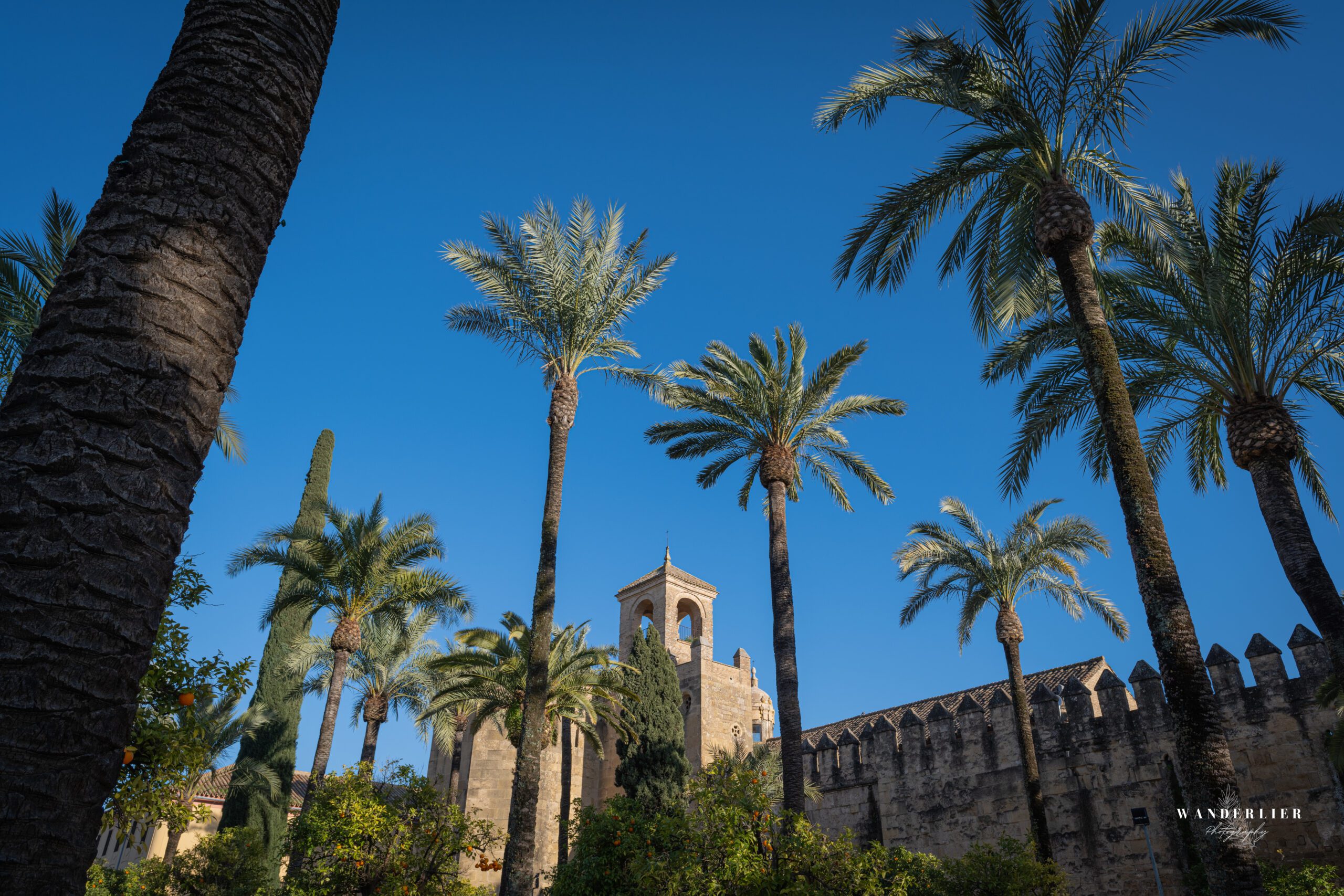
Plaza de la Corredera Córdoba
Plaza de la Corredera, an iconic square in Córdoba, reflects the vibrant history and social fabric of the city. This rectangular plaza, originally built in the 17th century, is known for its unique architecture and lively atmosphere.
Surrounded by characteristic whitewashed buildings with red shutters, Plaza de la Corredera has served various purposes over the centuries. From being a bullfighting arena and open-air theater to a marketplace, the square has fulfilled a rich range of functions.
The architecture of the square is dominated by porticos running along the sides, creating a sense of unity and harmony. Visitors can find a variety of cafés, bars, and shops that reflect the rich culinary and cultural traditions of Córdoba.
The history of the square dates back to Roman times, but the current design is from the 17th century. The name “Corredera” is derived from the Spanish word “correr,” meaning “to run,” highlighting its historical connection to horse racing and festivities.
Plaza de la Corredera has also witnessed significant historical events, including political gatherings and market activities. It is a place where locals and visitors come together to enjoy the lively atmosphere and various cultural events that take place here.
Today, Plaza de la Corredera remains a gathering point, where people meet to relax on terraces, taste local cuisine, and enjoy street performances. It is not only a historical site but also a vibrant social space that embodies the essence of Córdoba.
A visit to Plaza de la Corredera offers not only a glimpse into the past but also an authentic immersion into the contemporary life of Córdoba. The square symbolizes the dynamism and resilience of the city, where history and modernity exist side by side in harmony.
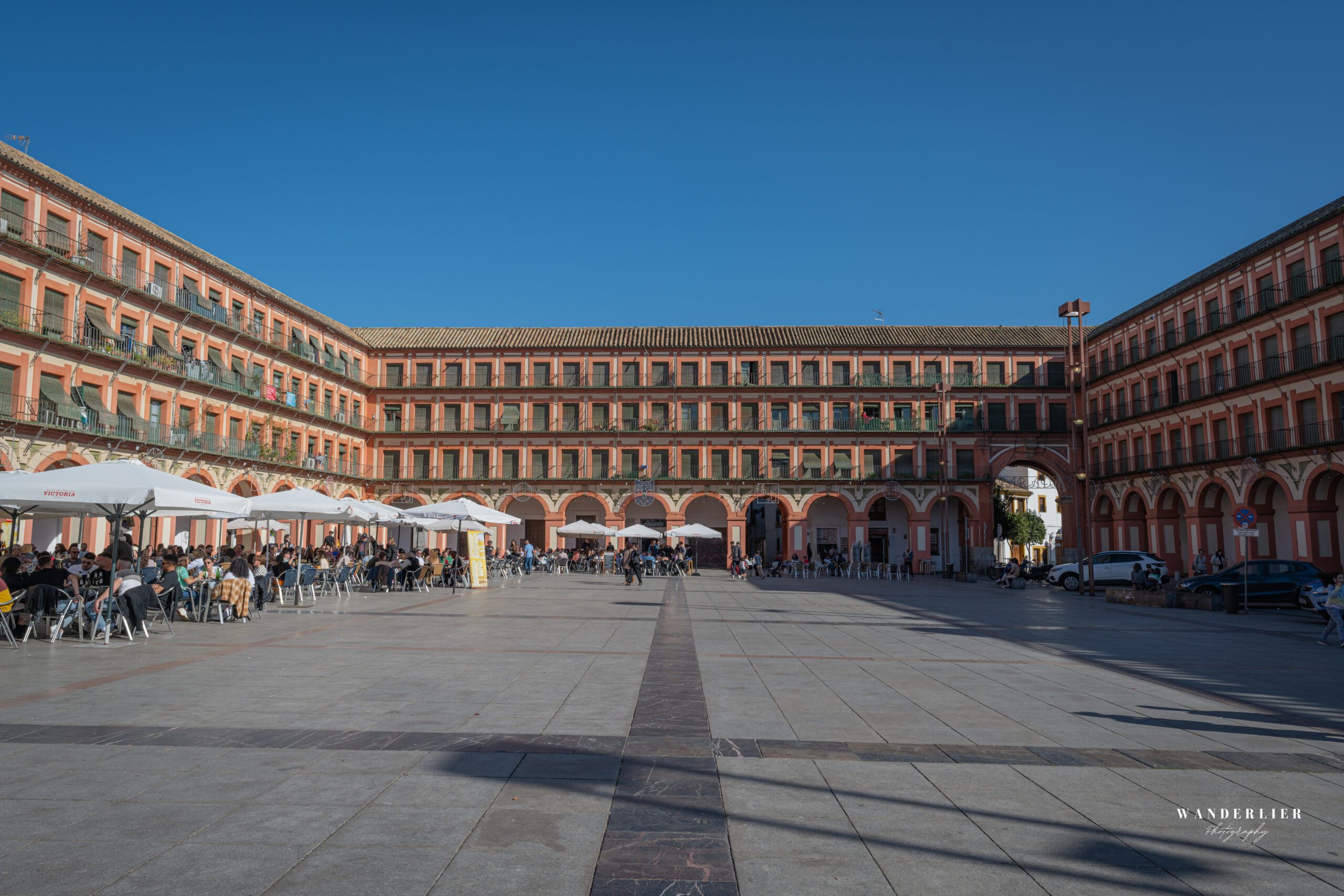
Juderia (Joodse wijk)
Juderia, the Jewish Quarter of Córdoba, forms an enchanting labyrinth of narrow streets, historic squares, and centuries-old synagogues. Located in the heart of the old city, Juderia embodies the rich cultural history of Córdoba, where Christian, Islamic, and Jewish communities peacefully coexisted for centuries.
The origins of Juderia date back to the Middle Ages, when Córdoba was renowned as a center of intellectual and artistic flourishing. The district was home to a thriving Jewish community, with synagogues, marketplaces, and artisan workshops that contributed to the vibrant atmosphere.
A highlight of Juderia is the medieval synagogue, an impressive structure with Moorish and Gothic influences. Its interior reflects the refined craftsmanship and artistic heritage of the Jewish community.
The maze of narrow alleys offers countless opportunities for exploration, where visitors can wander along flower-covered patios and traditional whitewashed houses. Every corner reveals traces of the past, with charming squares like Plaza del Cardenal Salazar that tell stories of ancient times.
A stroll through Juderia unveils the influence of Moorish and Jewish architecture, with picturesque streets leading to the imposing Mezquita and Alcázar. This seamless blending of styles and cultures makes the district a vibrant tribute to Córdoba’s golden centuries.
Today, Juderia is not only a historic district but also a lively neighborhood with boutiques, artisan shops, and cozy tapas bars. The preservation of its heritage goes hand in hand with its modern dynamism, making Juderia a vibrant part of the city where the echoes of the past are still felt. A visit to Juderia is not only a journey through history but also a celebration of Córdoba’s diverse and resilient spirit.
